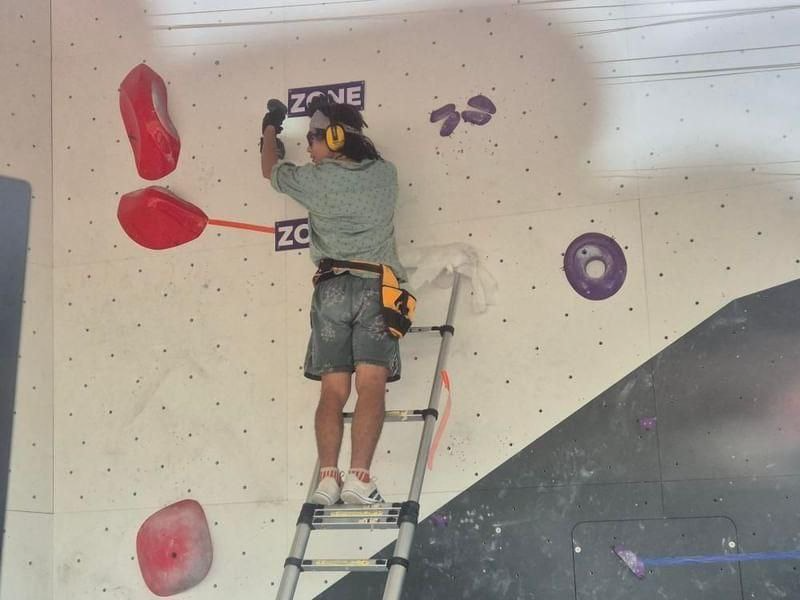Here are examples of antagonistic setting:
- Placing holds two meters (figuratively) apart to force a "dynamic" move.
- When matching the last hold is the crux of the entire boulder.
- Angling the holds in an un-ergonomic way to force a "hard" sequence.
"Antagonistic" setting is not an industry term. I just made it up.
Beauty is the Beast
Challenging moves are necessary to keep climbers interested. But we can also strive for beauty and elegance -- even on burly moves (who says a beast can't be beautiful?).
An antagonistic approach works like this:
How can I make this sequence hard to force someone to do the beta that I want?
A protagonistic approach works like this:
I want to create this cool move I have in my mind. How can I help my climbers do that move?
Instead of using holds as barriers to force a move, why don't we use them as tools that will help climbers move beautifully?
Maybe the difference between antagonistic and protagonistic is just the framing. But the frame does affect the picture we make.
Affordances
Don Norman's book, The Design of Everyday Things, talks about the concept of affordances: these are features that allow someone to do something.
For example, the backseat of a chair allows us to lean back.
Maybe we need to start thinking of holds as affordances: things that we give to climbers so they can have fun.
Example 1:
I need to screw holds far enough to force a dynamic sequence.
Alternate solution:
Can I force a body position that forces them away from the next hold? So that they will be forced to use power and dynamism to get to the next hold? Can I use body tension to force a dynamic move if they let go of one limb?
Example 2:
I will make the first and last sequences cruxy.
Alternate solution:
These things work in the Olympics because it's hard to separate the field in top-level competition.
But at commercial gym is really just a leisure center. There's not leisure in not being able to get on a problem or falling at the very top.
I remember when I was climbing in Danao, the bolter (Algin) said he could end some of his hard lines somewhere in the middle. But why not give climbers an extra set of juggy sequences for a victory lap?
I like this mindset. Even the Tour de France ends in a champagne "race" around Paris.
Example 3:
I will angle this crimp vertically so that it makes for a dicey foothold.
Alternate solution:
Awkward footholds, gastons, and undercuts do make a move hard. But consider the wrist and ankle positions that you are forcing. Think: an injured customer is a non-paying customer.

No comments:
Post a Comment